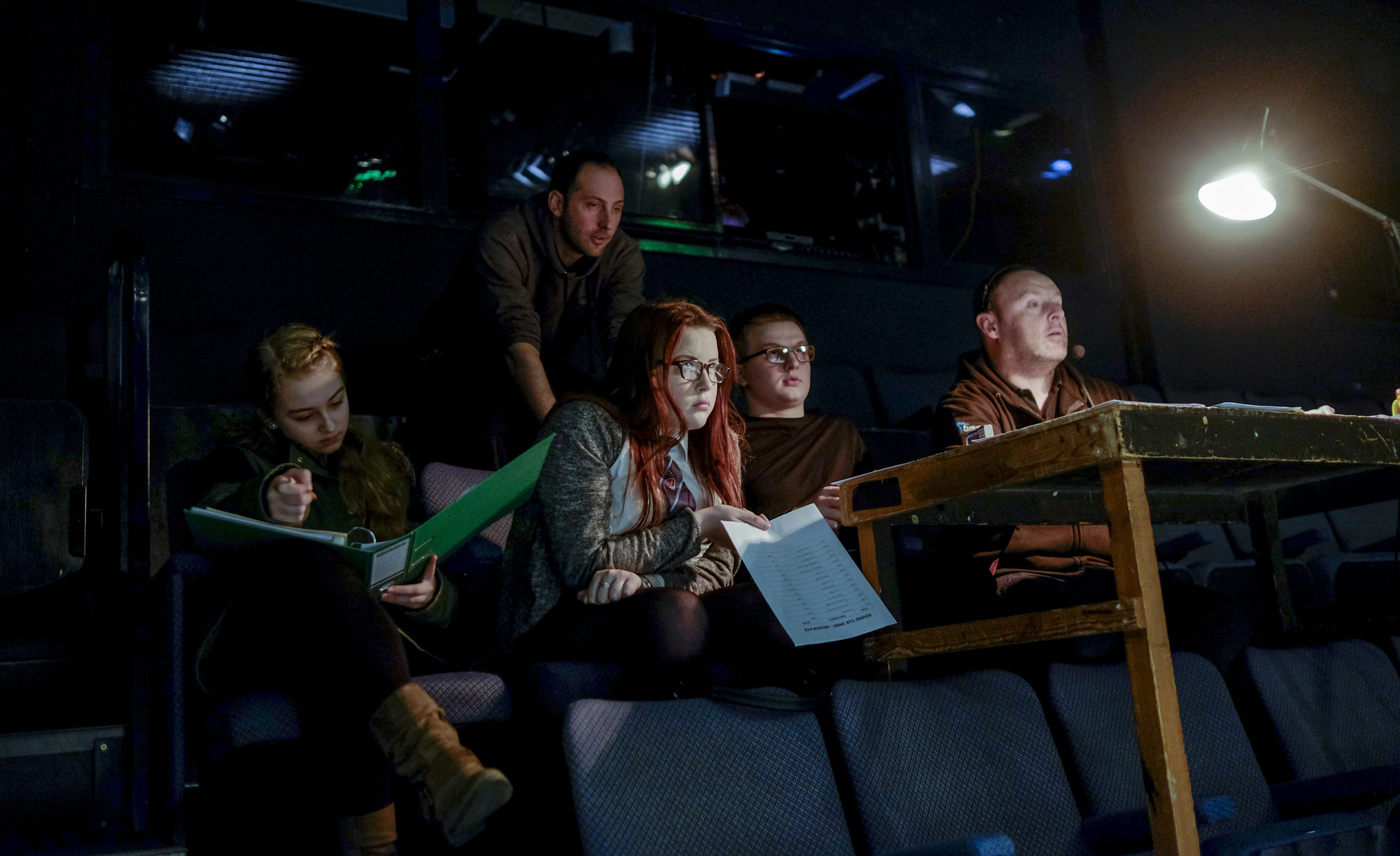The new-look Stephen Joseph Theatre in Scarborough plays an important role in the engagement of young people in the area. Mark Glover speaks to Associate Director Diana Logan about the recent refurbishment, strong teacher relationships and how youth engagement is a life-long project on the North Yorkshire coast.
As a seaside resort Scarborough is as quintessential as can be. Amusement arcades lure people to their two-penny pushers and pink candyfloss and chips wrapped in paper are grazed on by tourists as they saunter along the seafront.
The town’s quirky Rotunda museum, beach and castle all draw the crowds, but the Stephen Joseph Theatre, nestled slightly inland, continues to attract theatre goers, old and new. Last summer, seats sold were up 30 per cent compared to the same period last year. The theatre (the first in Britain to have an in-the-round stage) recently completed a £50 million refurbishment updating its foyer and restaurant areas. Three years previous its outreach department got its own update; a dedicated centre including offices and workshop space, making it more accessible and in turn, more welcoming for young, reluctant theatre goers.
Resilience
Diana Logan (pictured opposite working with a local primary school) is the theatre’s Associate Director and has worked there for nearly six years. Like most British seaside towns, the area relies on summer trade so the winter months can be tough for local businesses, just as it can be for the young people who live there. “There are a lot of challenges about growing up on the Yorkshire coast at the minute,” she says, “but our work with young people can teach them how to be resilient and increase that resilience.
Resilience is a strong life-skill to have and the fact that Logan is keen to ingrain it into the local community through creative engagement shows how passionate she is about the theatre’s role in the area. During our interview she uses the term ‘breaking barriers’ many times and it’s clear those ‘barriers’ have been identified and schemes put in place to take them away, allowing young people through. The recent refurbishment is one example: “It’s really exciting, she says with genuine enthusiasm. “It’s now more accessible and more open. There’s new lighting and the foyer space has been opened up. It means when we have young people it’s more modern for them, and in a bigger space and therefore more inviting.”
Another pinch-point for young people is the intimidating nature of a theatre trip. How can someone discover what’s inside if they don’t want to go through the doors? It’s another hurdle identified by Logan who counters the issue by taking workshops to communities, rather than putting pressure on people to attend the building itself.
“All of these projects take place in their areas so they don’t feel they have to come into town as that can sometimes be a barrier, so we are breaking down some of those barriers before we even start, “ Logan says. “We work in their communities, with them and for them.”
The outreach programme hones in on schools in the area, setting-up after-school clubs which encourage young people to dip their toe into theatre workshops. The scheme targets primary and secondary schools where engagement in the arts is particularly low. Crucially, the programme is funded meaning the workshops are free of charge.
Meaningful relationship
I ask Diana, who has a strong relationship with local schools, what challenges teachers from the area face. Not surprisingly, budgets remain a concern as is the pressure for schools to perform in non-art subjects. Given the purse-strings are being held extra tight and academic priorities are shifting, how can theatre provide schools with an offer that is both worthwhile and affordable to schools? “It’s about an open-ended conversation and teachers knowing that we’re here and that we can form a partnership with them,” Diana says. “It’s not about us just coming and doing something in their classroom and then leaving. I work with teachers who I’ve been with for about six to seven years who know if there is ever a question about anything I am just on the end of a phone. It’s that kind of relationship that really makes it meaningful.”
How do you build such a relationship? “As soon as a school shows interest in working with us we go in and we do what we call a diagnostic process where we ask a series of questions. The first is always ‘What is your current relationship with the arts?’ and then ‘Do you feel that it is something that could be meaningful to your school?’” she explains. “Not every school believes it can be a meaningful process or they may have other priorities that they’re looking at. So, it’s about talking to them and having those conversations.”
The Scarborough Pledge
In an effort to raise school standards in the region, a 2016 initiative called the Scarborough Pledge was set-up, sponsored by the North Yorkshire County Council. The scheme also hopes to retain as well as attract teachers to the coastal town by improving training and development.
Another strand of the pledge is the Scarborough Literacy Strategy, a framework put together with input from 70 key literacy leads including English teachers to support reading and writing in schools. The strategy has identified three main areas of focus; stories, books and parental influence, with the theatre supporting the scheme by working with year seven students who are struggling with reading and writing.
Their approach is based on a two-way conversation using creative techniques to address those challenges. Communication with young people is key, particularly those lacking confidence in the arts or struggling academically. The approach allows that person to open up sharing their fears and also their hopes.
The theatre is also involved in a multi-arts programme called the Broadening Horizons project, again commissioned by the council and match-funded by IVE, an arts council bridging organisation for the arts and education in Yorkshire and the Humber. The match-funding is important as it has enabled more schools to take part in the project at a much-reduced price. The theatre works with other organisations in the town opening up music, dance and visual arts to young people. Having already built up a strong relationship with schools in the borough the theatre was commissioned to extend the provision and now lead on the collective scheme.
A life-long commitment
Diana is adamant that the interaction with young people is not just a one off, it can even last a lifetime. “People can come, and they can experience things once, that’s brilliant, but what we do is work with as many people in our borough as we can and just look for ways to engage with them and pursue the things that they’re interested in,” she says.
“A young gentleman that I’ve been working with is currently in sixth form but I’ve worked with him since he was six years old. He now has a real drive and ambition to work in technical theatre. So, he started doing things like our schools’ and colleges’ festival, so he sat in the lighting box for the first time with a technician. Now he’s going off to drama school to do technical theatre,” she tells me proudly.
I ask Diana if this is ultimately what inspires her to do what she does, to see young people reach their potential? “Seeing young people and seeing what they can do, seeing young people grow and develop and watching them achieve their dreams. That’s why I do my job.”
As we wrap up the interview I hear gulls coming down my line being picked up by Diana’s phone. Being by the sea can be very inspiring, although I think that Diana and her theatre are providing enough inspiration for young people in the area to, as Diana says, achieve their dreams. www.sjt.uk.com



